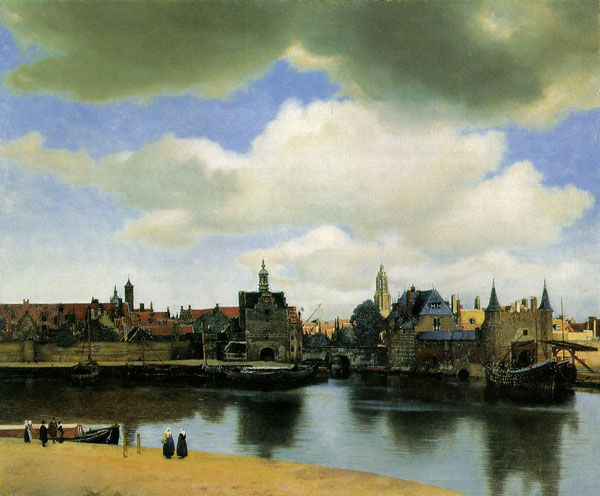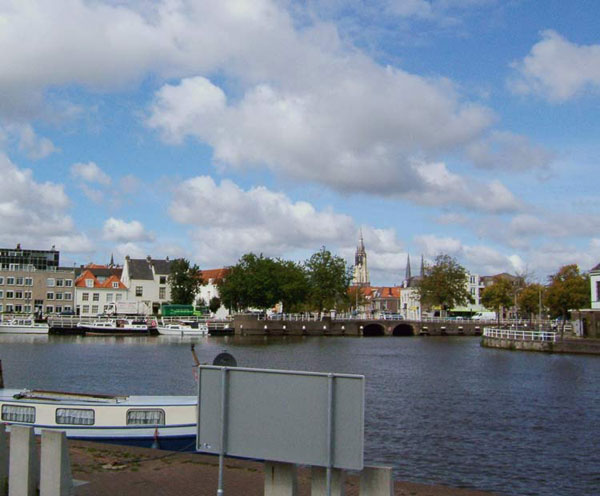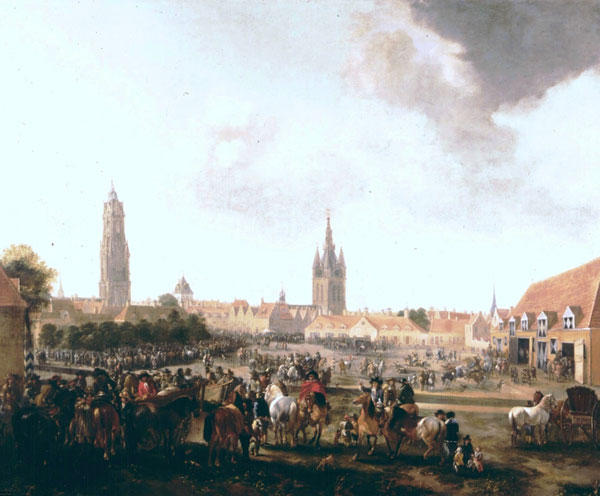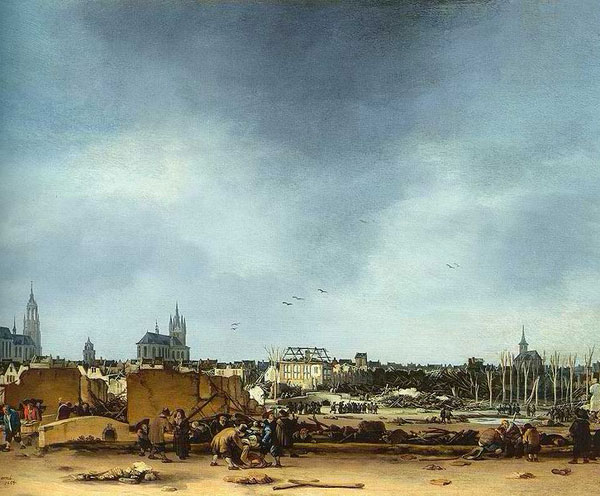
Without a doubt, Johannes Vermeer’s painting “View on Delft” (above, 1659 – 60, courtesy of The Mauritshuis in the Hague) is the most famous vista of that Dutch city which was home to the artist, and the school of light-infused, painstakingly rendered school that both supported him and grew in fame and influence due to his contributions and guidance. If you’re stopping by the medieval city to enjoy our walking tour through Vermeer’s life and work, head over through Delftview Square (that’s “Plein Delftzicht” in the local Dutch) which features a semicircular terrace offering approximately the same view of the town from which he painted that masterpiece. But, as close as you may get to standing where the artist sketched the towers and docks of the old city, time and other factors have made Vermeer’s “View on Delft” a vista only available in oils.

As seen from the east side of the Kolk canal today (seen above, image from Essential Vermeer), Delft is no longer the same town. The city gates are gone and all but the tower of the Old Church seems to have been replaced. But the transformation of Delft, which is still in many ways a city of earlier centuries, was neither planned nor gradual. Strange as it may seem, Vermeer’s view of the town was already out of date when he began to paint it in approximately 1659. A massive explosion in a gunpowder storage depot had cracked those city docks in two five years before Vermeer put brush to canvas. A more accurate representation of the city after that disaster is available below in “View of the Horsemarket of Delft” by Pieter Wouwerman, (1665), Egbert van der Poel’s “A View of Delft after the Explosion of 1654” (1654).


Due to two more similar explosions in the 19th century and ongoing civil improvements throughout, it’s almost impossible to judge today the accuracy of Vermeer’s view of his home city (though some try). Still, standing at the Plein Delftzich, you almost do feel the ability to press through the vista and touch Vermeer’s town. The fact that it could have been a partial fabrication in the first place only underlines his genius.
For a full tour of Delft with Vermeer as your guide with restaurants, bars, and other necesscities, pre-order a copy of “Art + Travel Europe: Step into the Lives of Five Famous Painters”.
Tagged with: delft Delft Holland painting Vermeer view on delft
 MUSEYON BOOKS Smart City Guides for Travel, History, Art and Film Lovers
MUSEYON BOOKS Smart City Guides for Travel, History, Art and Film Lovers

